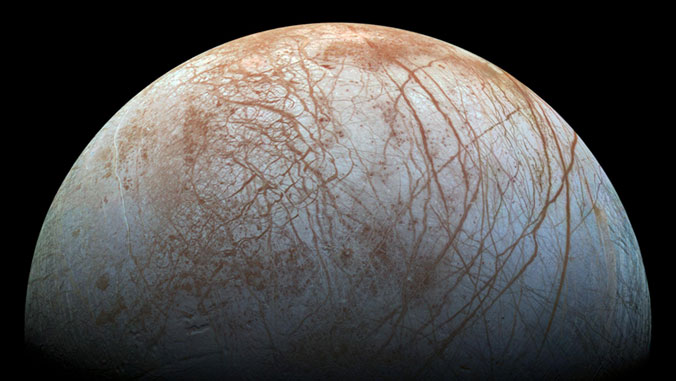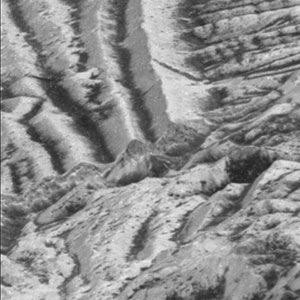Surface Of Jupiter’s Moon Europa May Have Conditions For Life
Jupiter’s icy moon Europa is of particular scientific interest because its salty ocean, which lies beneath a thick layer of ice, may currently have conditions suitable for existing life, and the ocean water may even make its way into the icy crust and onto the moon’s surface.
 Surface of Jupiter’s icy moon Europa. (Photo credit: NASA/JPL-Caltech/SETI Institute.) New research and modeling, led by University of Hawaiʻi at Mānoa planetary sciences researcher Emily Costello, estimate how far down that surface is disturbed by the process called “impact gardening.”
Surface of Jupiter’s icy moon Europa. (Photo credit: NASA/JPL-Caltech/SETI Institute.) New research and modeling, led by University of Hawaiʻi at Mānoa planetary sciences researcher Emily Costello, estimate how far down that surface is disturbed by the process called “impact gardening.”
The work, published in Nature Astronomy, estimates that the surface of Europa has been churned by small impacts to an average depth of about 12 inches (30 centimeters) over the last tens of millions of years.
It’s easy to see the impact of space debris on Earth’s Moon, where the ancient, battered surface is covered with craters and scars. Europa withstands a similar trouncing—along with a punch of super-intense radiation. As the uppermost surface of the icy moon churns, material brought to the surface is zapped by high-energy electron radiation accelerated by Jupiter.
 Bright layer (center) atop cliff on Europa was churned by impact gardening. (Photo credit: NASA/JPL-Caltech)
Bright layer (center) atop cliff on Europa was churned by impact gardening. (Photo credit: NASA/JPL-Caltech)
And any molecules that could qualify as potential chemical biosignatures, which include chemical signs of life, could be affected at that depth. That’s because the impacts would churn some material to the surface, where radiation would likely break the bonds of any potential large, delicate molecules generated by biology; meanwhile, some material on the surface would be pushed downward, where it could mix into the subsurface.
“If we hope to find pristine, chemical biosignatures, we will have to look below the zone where impacts have been gardening,” said Costello, a postdoctoral researcher at the Hawaiʻi Institute of Geophysics and Planetology in the UH Mānoa School of Ocean and Earth Science and Technology (SOEST). “Chemical biosignatures in areas shallower than that zone may have been exposed to destructive radiation.”
Going deeper
While impact gardening has long been understood as a likely process on Europa and other airless bodies in the solar system, the new modeling provides the most comprehensive picture yet of the process. It is the first to take into account secondary impacts caused by debris raining back down to Europa’s surface after being kicked up by an initial impact. The research makes the case that Europa’s mid- to high-latitudes would be less affected by the double-whammy of impact gardening and radiation.
“This work broadens our understanding of the fundamental processes on surfaces across the solar system,” said Cynthia Phillips, a Europa scientist at NASA’s Jet Propulsion Laboratory (JPL) in Southern California, and a co-author of the study. “If we want to understand the physical characteristics and how planets in general evolve, we need to understand the role impact gardening has in reshaping them.”
This research is an example of UH Mānoa’s goal of Excellence in Research: Advancing the Research and Creative Work Enterprise (PDF), one of four goals identified in the 2015–25 Strategic Plan (PDF), updated in December 2020.
For more information see SOEST’s website.
Content provided courtesy of JPL/NASA.
Publication: Costello, E.S., et al. Impact gardening on Europa and repercussions for possible biosignatures. Nature Astronomy, (2023). DOI:10.1038/s41550-021-01393-1
Original Story Source: University of Hawaii at Manoa

 Alerts Sign-up
Alerts Sign-up